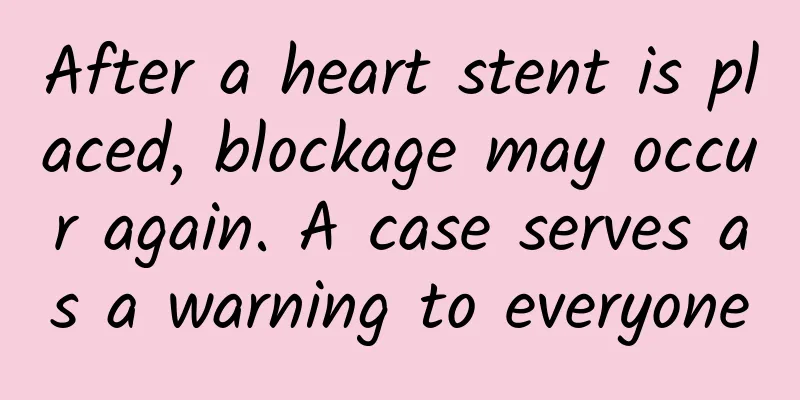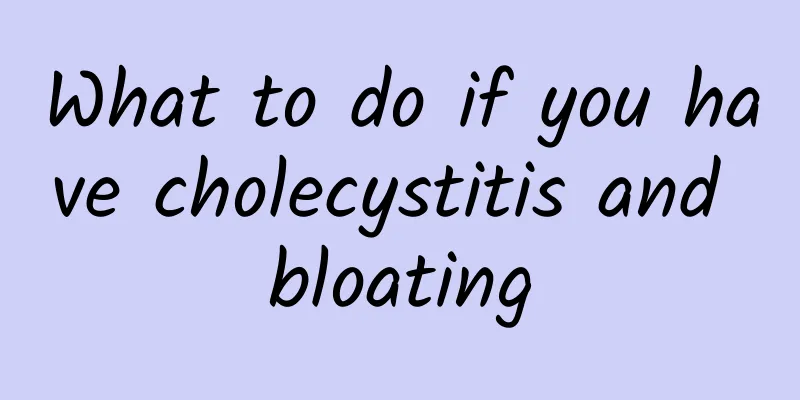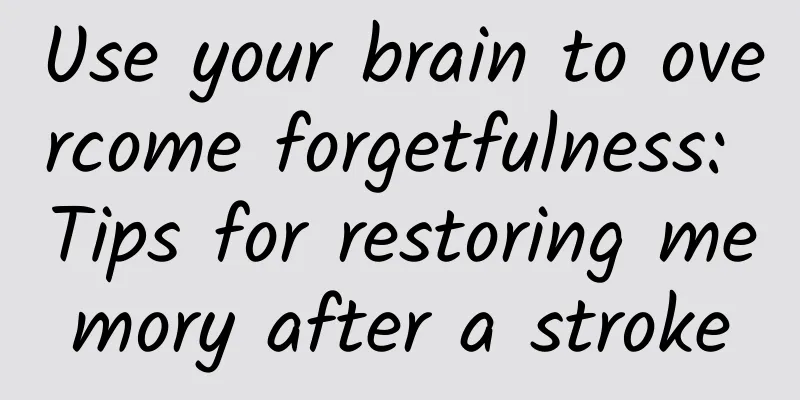After a heart stent is placed, blockage may occur again. A case serves as a warning to everyone

|
Early in the morning, the doctor in the emergency room told Huazi that a patient in his 40s had a heart attack last night. He was rescued for more than three hours but ultimately died. The doctor shook his head and sighed, saying it was a pity that he was so young. The patient's family said that the patient had frequent angina attacks more than two years ago. When he went to the hospital for examination, it was found that there was a severe stenosis in the coronary artery. After a heart stent operation, the symptoms were relieved. The reason why he suffered from coronary heart disease at such a young age was that he usually smoked, ate a lot of oil and salt, liked to eat meat, and rarely ate vegetables. His blood lipids and blood pressure were all above the standard. After the operation, the doctor warned him that the heart stent could not solve the problem once and for all, and that re-stenosis or even infarction might occur. He should take medicine on time in the future, maintain a healthy lifestyle, eat more vegetables and fruits, and less meat and salt. In the six months after the operation, he was relatively obedient to the doctor, quit smoking, ate less meat, and maintained exercise as much as he could. But after a while, he could not stand this bland lifestyle. In addition, he had no symptoms, so he gradually relaxed, started smoking again, and resumed a meat-based diet. His family members scolded him many times, and even quarreled with him, but they were worried about his heart condition, so they didn't dare to quarrel too much. So he just did what he wanted, no matter what his family members said, he would smoke and eat as he pleased, until this time he got sick... 1. Heart stents replace one risk with another The cause of coronary heart disease is that the myocardium cannot get enough blood and oxygen due to the narrowing of coronary arteries, which causes symptoms such as chest tightness, chest pain, and dyspnea. However, there is no problem with the myocardium itself, so as long as the narrowing of coronary arteries is resolved, various heart disease symptoms will disappear. Therefore, many patients with coronary heart disease think that having a heart stent can completely solve the problem. But in fact, this is not the case. Heart stents only replace the higher, uncontrollable risk of coronary heart disease with a lower, controllable risk. If you do not pay attention to protecting your cardiovascular system after having a heart stent, stenosis or even myocardial infarction may occur again. 2. Once coronary heart disease occurs, it cannot be cured The cause of coronary heart disease is that risk factors such as smoking, hypertension, hyperlipidemia, diabetes, aging, and obesity damage the intima of the coronary arteries, allowing low-density lipoprotein cholesterol (LDL-C) in the blood to enter the intima of the arteries and form atherosclerotic plaques. If the risk factors that damage the arterial intima cannot be eliminated, the plaque will continue to progress, causing the arterial lumen to narrow. When the degree of stenosis exceeds 50%, it can be diagnosed as coronary heart disease, and obvious symptoms of myocardial ischemia will appear. In addition, the hardened plaque may rupture, which will induce platelet aggregation to form thrombus and cause myocardial infarction. LDL-C in hardened plaques is deposited in foam cells. With current medical technology, it is impossible to remove plaques without damaging the arterial lining. Although statins can reduce the size of plaques, they cannot remove them. Therefore, once atherosclerosis is formed, it cannot be cured, and once coronary heart disease occurs, it cannot be reversed. Atherosclerosis of the arteries usually affects multiple blood vessels at the same time. A heart stent can only solve the problem of one blood vessel, and other blood vessels may still have potential risks. In addition, the stent itself will also produce foreign body stimulation, and re-stenosis may occur in the stent. Therefore, even if a heart stent is placed, it is necessary to maintain a healthy lifestyle and take medicine regularly. 3. Healthy lifestyle and adherence to medication to reduce risks For people with coronary heart disease, whether or not they have had a heart stent, they need to live a healthy lifestyle. They must stay away from tobacco and alcohol; they must limit their daily salt intake (3-5 grams), fat intake (less than 25 grams), and added sugar intake (less than 50 grams). They can eat a small amount of lean meat and fish, and eat more vegetables and fruits; they must exercise for 30 minutes every day to the best of their ability, but they must not overwork themselves. Drug treatment for coronary heart disease is very important. It is necessary to take medication consistently to control the "three highs" and avoid disease progression. The core medications are statins and antiplatelet drugs represented by aspirin, which need to be taken for a long time and can significantly reduce the incidence of myocardial infarction. In daily life, we should learn to control our emotions and avoid large emotional fluctuations such as rage and ecstasy. We should pay attention to avoid excessive fatigue, overeating, and sudden exertion. When the temperature changes, we should pay attention to adding or removing clothes in time to avoid catching a cold. To sum up, for people with coronary heart disease, heart stents cannot solve the problem once and for all. Stents only temporarily relieve symptoms, but the disease cannot be completely cured. Regular medication and a healthy lifestyle are still needed to effectively prevent the recurrence of the disease. Specific medication needs to be taken under the guidance of a doctor. If you have any questions about medication, please consult a doctor or pharmacist. I am pharmacist Huazi, welcome to follow me and share more health knowledge. |
<<: Vascular Health Day | Can these methods really unclog and purify blood vessels?
Recommend
Is it too troublesome to take off and put on contact lenses every day? This kind of contact lenses can be worn all the time
Speaking of contact lenses, they are the favorite...
What is 80c chest circumference
Every woman wants to have beautiful curves. Many ...
Can confinement help you lose weight?
Confinement is very important for women, because ...
There is light blood after the abortion
Medical abortion is extremely destructive to a gi...
Blood sugar standard values for pregnant women 7 times a day
During pregnancy, the mother needs to do many rou...
What are the fastest ways to safely enlarge breasts?
When women are enlarging their breasts, they cann...
Menstruation is getting earlier
If your period comes earlier and earlier, you mus...
What are the symptoms of malignant chocolate cyst?
Chocolate cyst is not actually a tumor. This dise...
Dreaming about cutting your fingernails
Dreaming about trimming your nails indicates that...
Can't sleep! Can't sleep well! Can't wake up! Is that you?
There are 24 hours in a day. If we calculate base...
Brown discharge after using methocloazole suppository
If a woman has dark red secretions after using me...
Does an incomplete septate uterus require surgical treatment?
Women with incomplete septate uterus usually feel...
Can a woman still get pregnant after having a vasectomy?
Sterilization is currently the most effective met...
What are the disadvantages of staying up late for girls?
With the progress of life, many young friends lik...
What to do if you have small breasts? Eat some foods to say goodbye to flat breasts
Female friends all hope to have plump and firm br...









